 In response to President Donald Trump having ordered a drone strike that killed a top Iranian general, the United States Senate on February 13 passed a resolution that would prevent him from engaging in further hostilities against Iran without first getting approval from Congress. The resolution had already passed the House by a vote of 224-194. It passed in the Senate by a vote of 55-45, with eight Republicans voting in favor.
In response to President Donald Trump having ordered a drone strike that killed a top Iranian general, the United States Senate on February 13 passed a resolution that would prevent him from engaging in further hostilities against Iran without first getting approval from Congress. The resolution had already passed the House by a vote of 224-194. It passed in the Senate by a vote of 55-45, with eight Republicans voting in favor.
Those Republicans include Mike Lee of Utah, Rand Paul of Kentucky, Susan Collins of Maine, Todd Young of Indiana, Jerry Moran of Kansas, Lamar Alexander of Tennessee, Bill Cassidy of Louisiana and Lisa Murkowski of Alaska.
President Trump is almost certain to veto the resolution. Both chambers lack the two-thirds majority necessary to override a Presidential veto. But the War Powers Act was written to be exempt from the possibility of a Presidential veto.
So, what's going on here? One of the most contentious fronts in the current power struggle between the Congress and the President involves the power to declare war. The Constitution makes clear that this power resides in Congress. Over time, this power has effectively shifted from the Congress to the President. Here's how that happened...
Concurrent resolution
This is a concurrent resolution, a largely symbolic act which lacks the full force of law. The House chose to use this approach because neither Mitch McConnell nor Donald Trump had the power to stop it. A concurrent resolution passed by the House must be brought up for a vote in the Senate; and it does not have to be signed by the President, and so a Presidential veto is likewise largely symbolic.
There appears to be no legal provision regarding the use of a concurrent resolution as a preemptive measure to prevent a war. However, if Trump were to start a war with Iran without congressional authorization, Congress can, by concurrent resolution, under the War Powers Act [§ 1544(c)], order the armed forces to be removed, and they have the votes to do it. More on this later.
(In a ruling on a different matter [INS v. Chadha, 462 U.S. 919 (1983)], the Supreme Court ruled unconstitutional a provision allowing a "one-house veto" --- that is, allowing either the House or the Senate, acting alone, by resolution, to reverse a decision of the judicial branch. It is claimed that this invalidates § 1544(c) of the War Powers Act, but in fact, the question of whether a concurrent resolution passed by both the House and the Senate can reverse a decision of the executive branch was not addressed in this decision.)
What the Constitution says
How can the President start a war? How did we get here? Our founding fathers said that no single individual should ever have this power. The vision of James Madison --- the separation of powers --- is in grave peril.
Under the Constitution, "The Congress shall have Power" "To declare War" and "To raise and support Armies" (Article I, Section 8). "The President shall be Commander in Chief of the Army and Navy of the United States" (Article II, Section 2).
Although the Constitution is the supreme law of the land, it is ineffectual if not enforced. In the words of Madison, "power is of an encroaching nature and ... it ought to be effectually restrained from passing the limits assigned to it." A "mere demarcation on parchment of constitutional limits ... is not a sufficient guard against ... tyrannical concentration of all the powers of government in the same hands."
World War II
The last time the Congress issued a formal declaration of war was the after the Japanese attack on Pearl Harbor. President Franklin D. Roosevelt riveted the nation with these words: "Yesterday, December 7, 1941, a date which will live in infamy, the United States of America was suddenly and deliberately attacked by naval and air forces of the Empire of Japan."
By the very next morning, Japanese forces had also attacked Hong Kong, Guam, the Philippines, Wake Island, and Midway Island. (transcript here)
If ever a President had reason to take offensive military action on his own, this was it. He did not do so. As "Commander in Chief of the Army and Navy," Roosevelt "directed that all measures be taken for our defense." Before any further engagement with the enemy, he obtained from Congress a declaration of war against Japan.
Korean War
President Harry S Truman's commitment of United States troops to South Korea set the precedent for executive use of military force without congressional authority. On June 27, 1950, two days after North Korea invaded South Korea, the United Nations Security Council passed Resolution 84, calling upon member states to repel the attack. It was the first time the United Nations authorized the use of military force. The United States never formally declared war on North Korea. President Truman called it a "police action". The fighting ended three years later, on July 27, 1953, under President Dwight D. Eisenhower, when the Korean Armistice Agreement was signed.
Vietnam War
The Gulf of Tonkin Resolution, Pub.L. 88-408, 78 Stat. 384, enacted August 10, 1964, authorized President Lyndon B. Johnson to "take all necessary measures to repel any armed attack" against United States forces in Southeast Asia. This was in response to two reported attacks, one real, one fictitious upon United States destroyers by North Vietnamese torpedo boats. United States officials called the Vietnam War a "conflict", because there was no formal declaration of war by Congress.
After defeating Barry Goldwater by running as the "peace candidate" in the 1964 presidential election, Johnson sent the first U.S. combat troops to Vietnam on March 8, 1965. American troop strength peaked at 549,500 in 1968. Johnson's failure to win the Vietnam War ended his presidency and led to the election of Richard M. Nixon, under whose administration the Vietnam War continued.
The Senate repealed the Gulf of Tonkin Resolution in 1970. Attempts were made in the Senate to cut off all funding for United States military operations in Vietnam and Cambodia. Still the war dragged on. A peace agreement was signed on January 27, 1973; the last American combat troops left Vietnam on March 29, 1973; and Saigon fell to Communist forces on April 30, 1975.
The War Powers Act
The official death tolls of American soldiers were 36,516 (33,686 in combat) in the Korean War, and 58,209 (47,424 in combat) in the Vietnam War. Seeking to reclaim its exclusive constitutional power to declare war, Congress passed the War Powers Act (Public Law 93-148, 87 Stat. 555, 50 USC § 1541-49) over President Nixon's veto on November 7, 1973. The War Powers Act requires that:
• The constitutional powers of the President as commander in chief are to be "exercised only pursuant to (1) a declaration of war, (2) specific statutory authorization, or (3) a national emergency created by attack upon the United States, its territories or possessions, or its armed forces." [§ 1541(c)]
• The President shall consult with Congress before deploying armed forces, and shall consult regularly with the Congress until the hostilities have ended or the forces have been removed. [§ 1542]
• "In the absence of a declaration of war," "the President shall submit within 48 hours" to both houses of Congress "a report, in writing, setting forth" the circumstances necessitating the use of force, the authority for doing so, and the estimated scope and duration of military involvement. [§ 1543(a)]
• "Within sixty calendar days," "the President shall terminate any use" of armed forces" "unless the Congress (1) has declared war or has enacted a specific authorization for such use" of force, (2) "has extended by law such sixty-day period," or (3) "is physically unable to meet as a result of an armed attack" in which case the deadline "shall be extended for not more than an additional thirty days". [§ 1544(b)]
• In the absence of "a declaration of war or specific statutory authorization, such forces shall be removed by the President if the Congress so directs by concurrent resolution." [§ 1544(c)] (emphasis added)
Uses of the War Powers Act
• On October 12, 1983, Congress passed Public Law 98-119, authorizing United States troops already stationed in Lebanon to remain there for 18 months. The resolution was signed into law by President Ronald Reagan. It was the first time the War Powers Act had been invoked.
• On January 12, 1991, following Iraq's invasion and annexation of Kuwait, President George H. W. Bush, pursuant to the War Powers Act, obtained from Congress an Authorization for the Use of Military Force Against Iraq. This, in turn, was pursuant to a United Nations Security Council Resolution 678 dated November 29, 1990, which had authorized the United Nations member states to use "all necessary means" to force Iraq out of Kuwait.
The invasion had occurred on August 2, 1990. There had been a gradual buildup of coalition forces from 35 nations. But President Bush obtained authorization from Congress before commencing aerial bombardment and ordering American troops into combat. The war lasted six weeks, resulting in the liberation of Kuwait.
• After the terrorist attacks of September 11, 2001, President George W. Bush, pursuant to the War Powers Act, obtained from Congress an Authorization for the Use of Military Force (Pub. L. No. 107-40, 115 Stat. 224). This open-ended resolution, approved on September 18, 2001, still in effect, states that:
This resolution led directly to the War in Afghanistan which, with British support, began with a bombing campaign on October 7, 2001. Eighteen years later, it has become the longest war in American history, with no end in sight. As of July 7, 2018, there had been 2,372 U.S. military deaths (1,856 in combat), 20,320 wounded in action, and 1,720 civilian contractor fatalities.
• On October 16, 2002, President George W. Bush signed into law another Authorization for the Use of Military Force Against Iraq (Public Law No. 107-243), passed by Congress pursuant to the War Powers Act. This resolution, still in effect, was not in response to an attack on the United States, or to an invasion of a sovereign nation. Rather, it was justified by the following allegations, among others:
-- Iraq had large stockpiles of chemical weapons, a large scale biological weapons program, and an advanced nuclear weapons development program, in violation of the cease-fire agreement entered into in 1991 after the liberation of Kuwait
-- Iraq posed a continuing threat to the national security of the United States and international peace and security in the Persian Gulf region
-- Members of al Qaida and other terrorist organizations were known to be in Iraq
-- Iraq had attempted in 1993 to assassinate former President George H. W. Bush
There were serious legal questions about the Bush Doctrine of preemptive war.
United States military involvement officially ended when the last U.S. troops withdrew nine years later, on December 18, 2011. Weapons of mass destruction were never found and were never confirmed to have existed. American military casualties were 4,496 killed and 32,252 wounded, many with traumatic brain injuries.
Evasions of the War Powers Act
Presidents Jimmy Carter, Ronald Reagan, George H. W. Bush, Bill Clinton and Barack Obama all avoided triggering the War Powers Act by relying upon a variety of interpretrations. Carter's attempted rescue of the hostages in Iran was not an act of aggression. The military advisers sent by Reagan to El Salvador were not equipped for combat. The combat troops sent by Bush to Panama were withdrawn within sixty days. Clinton notified Congress of his air strikes in Kosovo two days after they began, but he continued the bombing for more than sixty days. Obama did not consult with Congress in advance about his air strikes in Libya, because these military operations did not constitute "hostilities", and no ground troops were involved.
This interpretation that the War Powers Act need not be invoked if no combat troops are involved allows for aerial bombardment of foreign nations without consent of Congress. This now includes remote control murder, the targeted killing of specified individuals by unmanned drones, which had not yet been invented when the War Powers Act was drafted.
President Obama, greatly expanding a policy initiated by President George W. Bush, carried out 563 air strikes, largely by drones, targeting Pakistan, Somalia and Yemen. Working from a "disposition matrix" or "kill list", the intention was to kill specific suspected terrorists while minimizing civilian casualties. He did not consult with Congress because: (1) the drone strikes were pursuant to the open-ended Congressional resolution of September 18, 2001 (see above) which authorized the President "to use all necessary and appropriate force ... to prevent any future acts of international terrorism against the United States"; and (2) no U.S. ground troops were involved.
On January 3, 2020, President Donald J. Trump ordered a drone strike near Baghdad International Airport that targeted and assassinated Qasem Soleimani, an Iranian major general considered to be the second most powerful person in the Iranian government. He did not consult with Congress in advance because, the Administration said, the mission was pursuant to the resolution of October 16, 2002 (see above) which authorized the use of military force in Iraq. It was the first time in American history that a President had ordered the assassination of a foreign official and bragged about it publicly. President Trump's advance consultation with Congress about the possibility of further military action against Iran consisted of notification by tweet.
This display of contempt for Congress was the reason for the concurrent resolution to prevent a war with Iran. One of the first two Republicans to support the measure was Rand Paul of Kentucky, who stated his reasons to Wolf Blitzer on CNN:
No one, to my knowledge, denies that the killing of Qasem Soleimani brought us to the brink of war with Iran. President Trump's lack of authority to do so is quite clear. It was imperative that Congress resist the encroachments of an increasingly tyrannical presidency. This is not a partisan issue. Or shouldn't be. Two former Presidential candidates from the President's own party (Rand Paul and Lamar Alexander) voted to rein in the power of the office they once sought for themselves. It is the duty of all of us, as public citizens, to commend those who stood for the constitutional republic in this time of grave peril, especially the eight Republican senators who voted to enforce their Constitutional powers as members of Congress. We may need them to do so again, very soon.
Richard Hayes Phillips is a published historian and genealogist whose books, Without Indentures, Birth and Shipping Records, and The Search for Survivors, are available in paperback from Genealogical Publishing Company, and in hardbound archival editions are available directly from the author for the same price as the paperbacks. He is also an election fraud investigator whose unprecedented forensic probe of the 2004 Presidential election in Ohio is documented in Witness to a Crime: A Citizens' Audit of an American Election. Signed hardcover copies are also directly available from the author.


 How (and Why!) to 'Extend an Olive Branch' to MAGA Family Members Over the Holidays: 'BradCast' 11/21/24
How (and Why!) to 'Extend an Olive Branch' to MAGA Family Members Over the Holidays: 'BradCast' 11/21/24 'Green News Report' 11/21/24
'Green News Report' 11/21/24
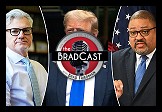 Former Federal Prosecutor: Trump Must Be Sentenced in NY Before Taking Office Again: 'BradCast' 11/20/24
Former Federal Prosecutor: Trump Must Be Sentenced in NY Before Taking Office Again: 'BradCast' 11/20/24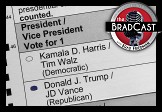 'Bullet Ballot' Claims, Other Arguments for Hand-Counting 2024 Battleground Votes: 'BradCast' 11/19/24
'Bullet Ballot' Claims, Other Arguments for Hand-Counting 2024 Battleground Votes: 'BradCast' 11/19/24 'Green News Report' 11/19/24
'Green News Report' 11/19/24 Trump Already Violating Law (He Signed!) During Transition: 'BradCast' 11/18/24
Trump Already Violating Law (He Signed!) During Transition: 'BradCast' 11/18/24 Sunday 'Into the Gaetz of Hell' Toons
Sunday 'Into the Gaetz of Hell' Toons Computer Security Experts Ask Harris to Seek Hand-Counts Due to Voting System Breaches: 'BradCast' 11/14/24
Computer Security Experts Ask Harris to Seek Hand-Counts Due to Voting System Breaches: 'BradCast' 11/14/24  'Green News Report' 11/14/24
'Green News Report' 11/14/24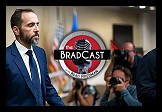 Trump Criminal Cases Fade After Election as GOP 'Does Not Believe in Rule of Law': 'BradCast' 11/13/24
Trump Criminal Cases Fade After Election as GOP 'Does Not Believe in Rule of Law': 'BradCast' 11/13/24 Climate Advocates Brace for Fight With Trump 2.0: 'BradCast' 11/12/24
Climate Advocates Brace for Fight With Trump 2.0: 'BradCast' 11/12/24 'Green News Report' 11/12/24
'Green News Report' 11/12/24 Let It All Out: 'BradCast' 11/11/24
Let It All Out: 'BradCast' 11/11/24 Sunday 'Like it or Not' Toons
Sunday 'Like it or Not' Toons Not All Bad: Abortion Rights Won Big (Almost) Everywhere: 'BradCast' 11/7/24
Not All Bad: Abortion Rights Won Big (Almost) Everywhere: 'BradCast' 11/7/24 'Green News Report' 11/7/24
'Green News Report' 11/7/24 U.S. CHOOSES CONVICTED CRIMINAL, ADJUDICATED RAPIST: 'BradCast' 11/6/24
U.S. CHOOSES CONVICTED CRIMINAL, ADJUDICATED RAPIST: 'BradCast' 11/6/24 ELECTION DAY 2024: Tea Leaves, Probs for Voters, What's Next: 'BradCast' 11/5/24
ELECTION DAY 2024: Tea Leaves, Probs for Voters, What's Next: 'BradCast' 11/5/24 'Closing Arguments' for Undecideds, Third-Party Voters: 'BradCast' 11/4/24
'Closing Arguments' for Undecideds, Third-Party Voters: 'BradCast' 11/4/24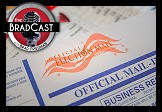 The GOP 'Voter Fraud' Before the Storm: 'BradCast' 10/31/24
The GOP 'Voter Fraud' Before the Storm: 'BradCast' 10/31/24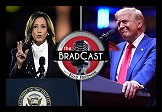 'Closing Arguments'with Digby and Driftglass: 'BradCast' 10/30/24
'Closing Arguments'with Digby and Driftglass: 'BradCast' 10/30/24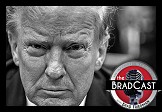 Trump Promises to be a Lawless, Authoritarian President. Believe Him: 'BradCast' 10/29/24
Trump Promises to be a Lawless, Authoritarian President. Believe Him: 'BradCast' 10/29/24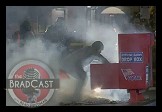 Ballots Burn, Billion-aires 'Obey in Advance', Callers Ring In: 'BradCast' 10/28/24
Ballots Burn, Billion-aires 'Obey in Advance', Callers Ring In: 'BradCast' 10/28/24 Musk's Privatized Internet Satellite System Threatens U.S. National Security
Musk's Privatized Internet Satellite System Threatens U.S. National Security
 VA GOP VOTER REG FRAUDSTER OFF HOOK
VA GOP VOTER REG FRAUDSTER OFF HOOK Criminal GOP Voter Registration Fraud Probe Expanding in VA
Criminal GOP Voter Registration Fraud Probe Expanding in VA DOJ PROBE SOUGHT AFTER VA ARREST
DOJ PROBE SOUGHT AFTER VA ARREST Arrest in VA: GOP Voter Reg Scandal Widens
Arrest in VA: GOP Voter Reg Scandal Widens ALL TOGETHER: ROVE, SPROUL, KOCHS, RNC
ALL TOGETHER: ROVE, SPROUL, KOCHS, RNC LATimes: RNC's 'Fired' Sproul Working for Repubs in 'as Many as 30 States'
LATimes: RNC's 'Fired' Sproul Working for Repubs in 'as Many as 30 States' 'Fired' Sproul Group 'Cloned', Still Working for Republicans in At Least 10 States
'Fired' Sproul Group 'Cloned', Still Working for Republicans in At Least 10 States FINALLY: FOX ON GOP REG FRAUD SCANDAL
FINALLY: FOX ON GOP REG FRAUD SCANDAL COLORADO FOLLOWS FLORIDA WITH GOP CRIMINAL INVESTIGATION
COLORADO FOLLOWS FLORIDA WITH GOP CRIMINAL INVESTIGATION CRIMINAL PROBE LAUNCHED INTO GOP VOTER REGISTRATION FRAUD SCANDAL IN FL
CRIMINAL PROBE LAUNCHED INTO GOP VOTER REGISTRATION FRAUD SCANDAL IN FL Brad Breaks PA Photo ID & GOP Registration Fraud Scandal News on Hartmann TV
Brad Breaks PA Photo ID & GOP Registration Fraud Scandal News on Hartmann TV  CAUGHT ON TAPE: COORDINATED NATIONWIDE GOP VOTER REG SCAM
CAUGHT ON TAPE: COORDINATED NATIONWIDE GOP VOTER REG SCAM CRIMINAL ELECTION FRAUD COMPLAINT FILED AGAINST GOP 'FRAUD' FIRM
CRIMINAL ELECTION FRAUD COMPLAINT FILED AGAINST GOP 'FRAUD' FIRM RICK SCOTT GETS ROLLED IN GOP REGISTRATION FRAUD SCANDAL
RICK SCOTT GETS ROLLED IN GOP REGISTRATION FRAUD SCANDAL VIDEO: Brad Breaks GOP Reg Fraud Scandal on Hartmann TV
VIDEO: Brad Breaks GOP Reg Fraud Scandal on Hartmann TV RNC FIRES NATIONAL VOTER REGISTRATION FIRM FOR FRAUD
RNC FIRES NATIONAL VOTER REGISTRATION FIRM FOR FRAUD EXCLUSIVE: Intvw w/ FL Official Who First Discovered GOP Reg Fraud
EXCLUSIVE: Intvw w/ FL Official Who First Discovered GOP Reg Fraud GOP REGISTRATION FRAUD FOUND IN FL
GOP REGISTRATION FRAUD FOUND IN FL


































